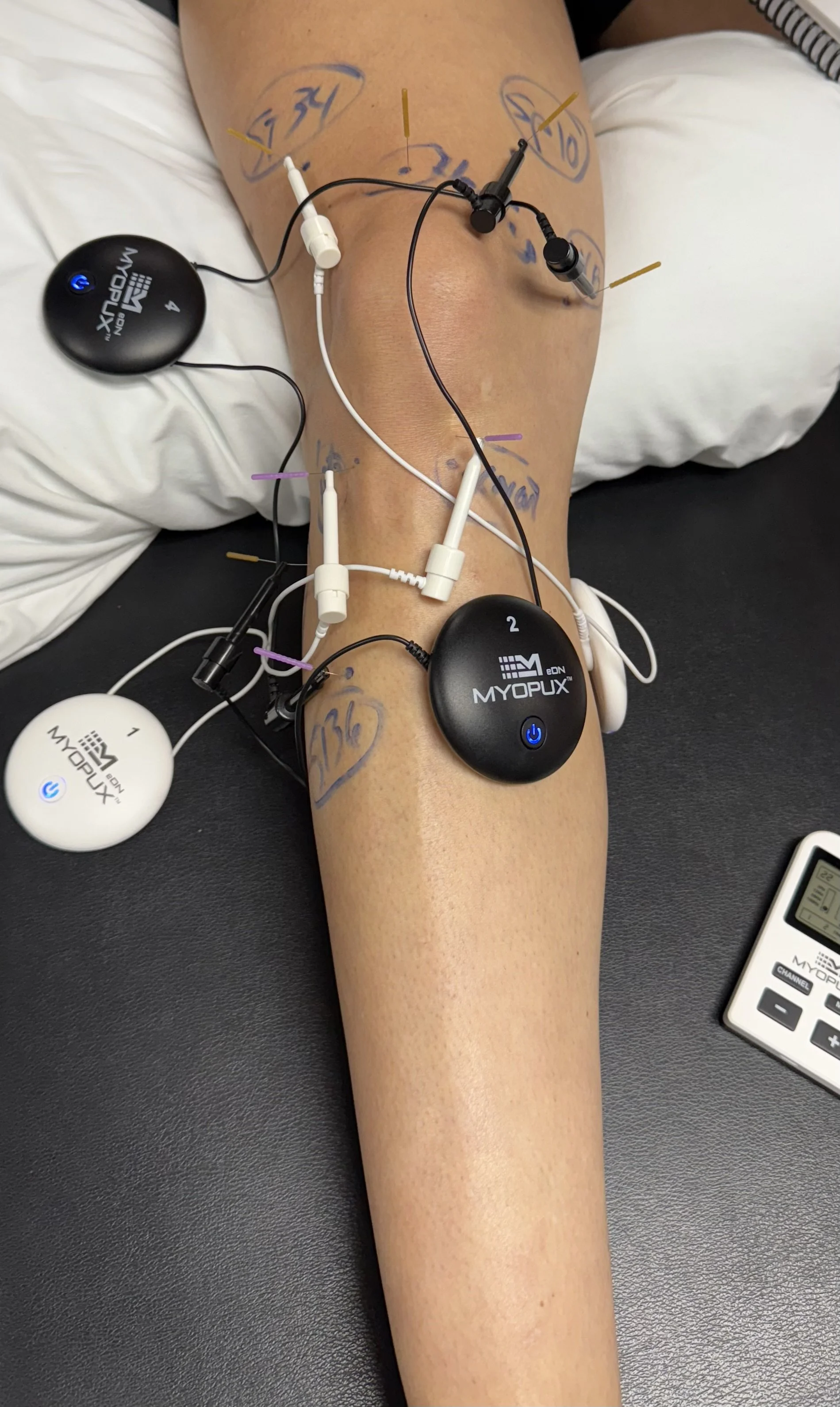The Benefits of Dry Needling vs Acupuncture for Sports Recovery
Dry needling and acupuncture may look similar, but their benefits for sports recovery are very different. Learn why dry needling is a powerful tool for muscle release, nerve reset, and faster recovery.
By Dr. Benjamin Glider, PT, DPT – Mobile Recovery Lab, Central NJ
When it comes to recovery and pain relief, athletes often hear about dry needling and acupuncture. Both use fine needles, but the techniques, goals, and effects are very different. Understanding these differences can help you choose the best approach for your sports recovery.
Dry Needling – A Sports-Focused Technique with Neural Reset Effects
Dry needling is a modern, evidence-based treatment performed by trained physical therapists. It targets trigger points, tight muscle bands, and the nervous system through perineural needling.
Unlike acupuncture, dry needling works by creating controlled microtrauma within the muscle tissue. This microtrauma triggers a localized inflammatory response that is beneficial for healing—bringing blood flow, oxygen, and nutrientsto the area while activating the body’s natural repair processes.
Perineural needling takes this a step further by targeting areas near nerves to help reset the nervous system. When a nerve root becomes irritated, it can trigger inflammation that leads to muscle inhibition and weakness. By stimulating these nerve pathways, dry needling can interrupt that cycle, reduce inhibition, and restore normal muscle activation.
Benefits for Sports Recovery:
Releases trigger points and breaks up tight muscle bands.
Improves range of motion and flexibility.
Stimulates healing through beneficial inflammation.
Resets the nervous system to restore muscle activation.
Addresses both muscle dysfunction and nerve-related issues.
Acupuncture – A Holistic, Traditional Practice
Acupuncture is a traditional Chinese medicine technique performed by licensed acupuncturists. It uses needles inserted at specific points along the body’s meridians to restore the flow of Qi and promote overall wellness.
Benefits for Sports Recovery:
Reduces stress and promotes relaxation.
Supports natural healing processes and circulation.
Helps manage chronic pain and inflammation.
Improves whole-body balance and wellbeing.
Which Is Right for Athletes?
While acupuncture can be an excellent choice for overall health and long-term wellness, dry needling is often the preferred option for sports-specific recovery. Its ability to address muscle tension, nerve irritation, and movement dysfunction makes it highly effective for athletes looking to recover quickly and perform at their best.
How I Use Dry Needling at Mobile Recovery Lab
As a Doctor of Physical Therapy, I integrate dry needling into a complete recovery program that includes:
Functional movement assessments
Soft tissue mobilization and active release
Corrective exercise and mobility training
This approach treats both the cause and the symptoms, helping athletes move better, recover faster, and reduce the risk of setbacks.
The Takeaway
Dry needling—especially with perineural techniques—goes beyond muscle release. It delivers a neural reset, promotes healing, and restores optimal movement so athletes can get back to training at full capacity.
📍 Serving athletes and active adults in Central NJ
📅 Book your recovery session today and experience the difference
The Secret Weapon You’re Probably Ignoring- Recovery
Most athletes train hard—but few recover smart. Recovery isn’t just rest; it’s the key to unlocking performance, reducing injury risk, and pushing your limits. Learn why recovery should be your secret weapon.
You train hard. You grind. You push through soreness, fatigue, and plateaus chasing results. But here’s the truth most people overlook:
Recovery isn’t a break from progress. It is progress.
If your training is the stimulus, recovery is the response—and without it, you’re just wearing yourself down. Performance gains happen between sessions, not just during them.
Here’s why recovery matters:
1. You’re not building strength during your workout—you're breaking tissue down.
It’s during recovery that your body repairs muscle fibers, replenishes glycogen stores, and adapts to the demands you’ve placed on it.
2. Ignoring recovery increases your injury risk.
Fatigued muscles can’t stabilize joints as effectively. Skipping proper tissue work, mobility, or deloads can lead to nagging overuse injuries—or worse.
3. Better recovery = better training quality.
If you’re dragging through your workouts, constantly sore, or plateauing, it’s not a lack of effort—it’s likely a lack of recovery strategy.
What does smart recovery look like?
It’s not just foam rolling and hoping for the best. True recovery involves:
Targeted manual therapy to address restrictions.
Strategic mobility work and movement assessments to optimize mechanics.
Nervous system reset techniques (like dry needling, joint manipulation, and soft tissue work).
Deliberate rest and recovery protocols tailored to your training goals.
As an elite physical therapist, I’ve worked with athletes from all walks of life, and the common thread?
The ones who recover well, perform better. Period.
Recovery isn’t optional. It’s the foundation of longevity, resilience, and peak performance.
If you’re training like an athlete, you should be recovering like one too.
Let’s talk about how you can level up your recovery game.


